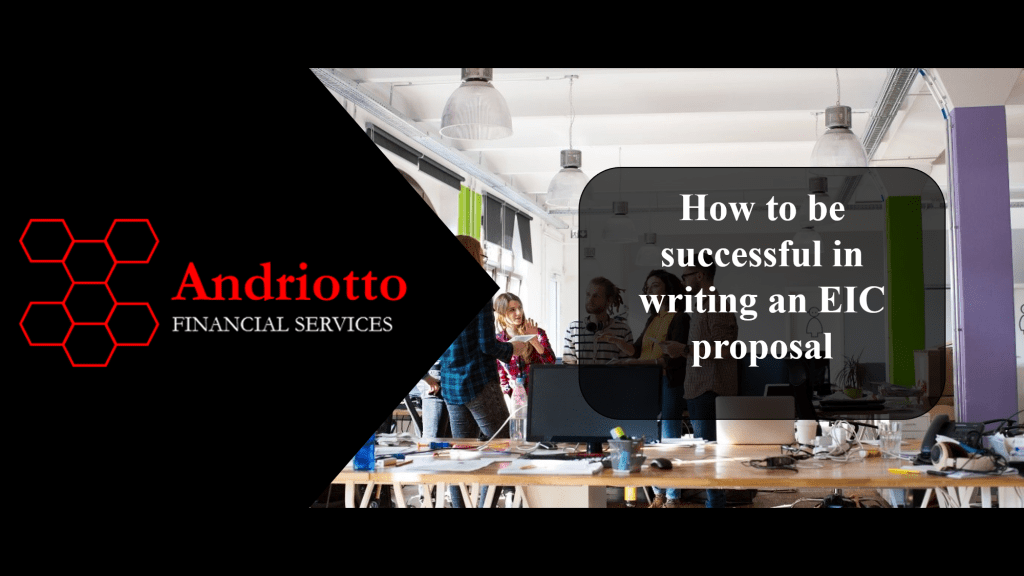Being concise, yet effectively communicating operational capacity, is key to EIC success. Word limits on proposals require applicants to cover all points succinctly within established parameters on the submission platform. The applicant organization and partnered groups must possess the ability to carry out the proposed project. Proposals need to demonstrate this operational capacity through factual clues and signals rather than just statements alone if seeking key to EIC success.
For a successful project the applicant should demonstrate and provide convincing description of substantial demand and customer willingness to pay for the innovation. The assessment process particularly appreciates demand generated by new ideas, with the potential to create new markets.
To support the above, the proposal must present a credible and convincing description of the targeted users of the innovation. It must present them together with how it has addressed their needs, why the identified users or customers will want to use or buy the product, service or business model, and compare all this to what is currently available, if anything at all.
Another must have is a realistic and relevant analysis of market conditions and growth-rate, competitors and competitive offerings, key stakeholders, clear identification of opportunities for market introduction, market creation or disruption.
The proposal should feature all of the above against the backdrop of a realistic and relevant description of how the innovation has the potential to scale up the applicant organization and its business.
Ideally, this should support with a well-versed and argumented business plan with a clear timeline, and complement it, where possible, by a track-record that includes financial data. The applicant and other participants should align the proposal with their overall strategy.
The commitment of the team should be demonstrated with clues, signals and where possible facts.
Highly appreciated are proven commercial and management experience. This includes understanding the financial requirements for successful execution. It also includes understanding the organisational requirements for successful execution in scaling up both project and business. This analysis should be realistic. Where necessary, third parties needed should be brought in. This brings in third parties to increase the realism of execution.
A key part of a successful proposal is a realistic and relevant strategic plan for commercialisation. This plan should include the approximate time-to market or deployment. Activities to be undertaken after the project should also be discussed. These activities help to make the project long-term sustainable. They should be discussed in support of the overall go to market strategy.
The proposal, especially with respect to both commercialisation and assessment of competitors and competitive offerings, must consider, analyze, discuss, and demonstrate a strong understanding of the European and global dimension of innovation.
In order to increase the realism and long-term sustainability of innovation, the proposal should ensure the freedom to operate the innovation. The proposal should communicate a well-developed knowledge-protection strategy. This includes the current patent protection filing status. It also includes know-how ownership and licensing issues. The proposal must communicate these issues. It must also clearly address any regulatory and standards requirements. These requirements often turn out to be a make it or brake it milestone in any project.
Statistics show that high-risk/high-potential innovation idea projects that have something unique that nobody else has usually score highest. Ideally your innovation embodiment into a product or projection into service-rendering process should be better and significantly different to any alternative.
The evaluation values game-changing ideas or breakthrough innovations particularly highly. This high degree of novelty comes with a high chance of either success or failure and there is no downside in clearly stating that. On the contrary this is exactly the type of projects that get support from the programme.
A realistic description of the current stage of development is necessary. A clear outline of the steps planned to take this innovation to market is also necessary. Not only are these necessary for the probability of success and realism of the overall plan. But they also demonstrate in an objective way the level of experience and maturity of the key execution people. Especially the top management of the project are demonstrated.
Characteristics that score high for the proposal include highly innovative solutions. These solutions go beyond the state of the art in comparison with existing ones. Comparisons include factors like costs and ease of use. Other relevant features also include climate impact, the gender dimension and any other benefits for society.
The proposal should also communicate a very good understanding of both risks and opportunities. These relate to the successful market introduction of the innovation. They relate to it from both a technical and commercial point of view. Documentation on the technological, practical and economic feasibility of the innovation must be provided. This documentation must be provided in support of any claims or statements.
The proposal should also make sure that its objectives as well as its approach and activities are consistent with the expected impact in terms of commercialisation or deployment resulting in company growth. Project outcome should also relate to measurement indicators and criteria for success.
Evaluators also take into account the availability of resources required including human, facilities, networks, to develop project activities in the most suitable conditions.
Realistic timeframe and comprehensive description of implementation including work-packages, major deliverables and milestones coupled with risk management aspects are a key feature of successful projects and these should also take the applicant’s innovation ambitions and objectives into account.
Finally, all of the above points made must address each other in a mutually compatible and reinforcing way and eliminate any conflicts between them or explain them.
At AFS, we are passionate about fostering innovation and empowering ambitious minds to flourish. Our mission is to provide best-in-class financial services for traditional and crypto deals, exploit European grants, and use quantitative methods to improve clients’ performance. We aim to help our customers unlock their full business potential.
Are you looking to fund your next venture or unlock grant opportunities?
Contact us at [email protected]!




